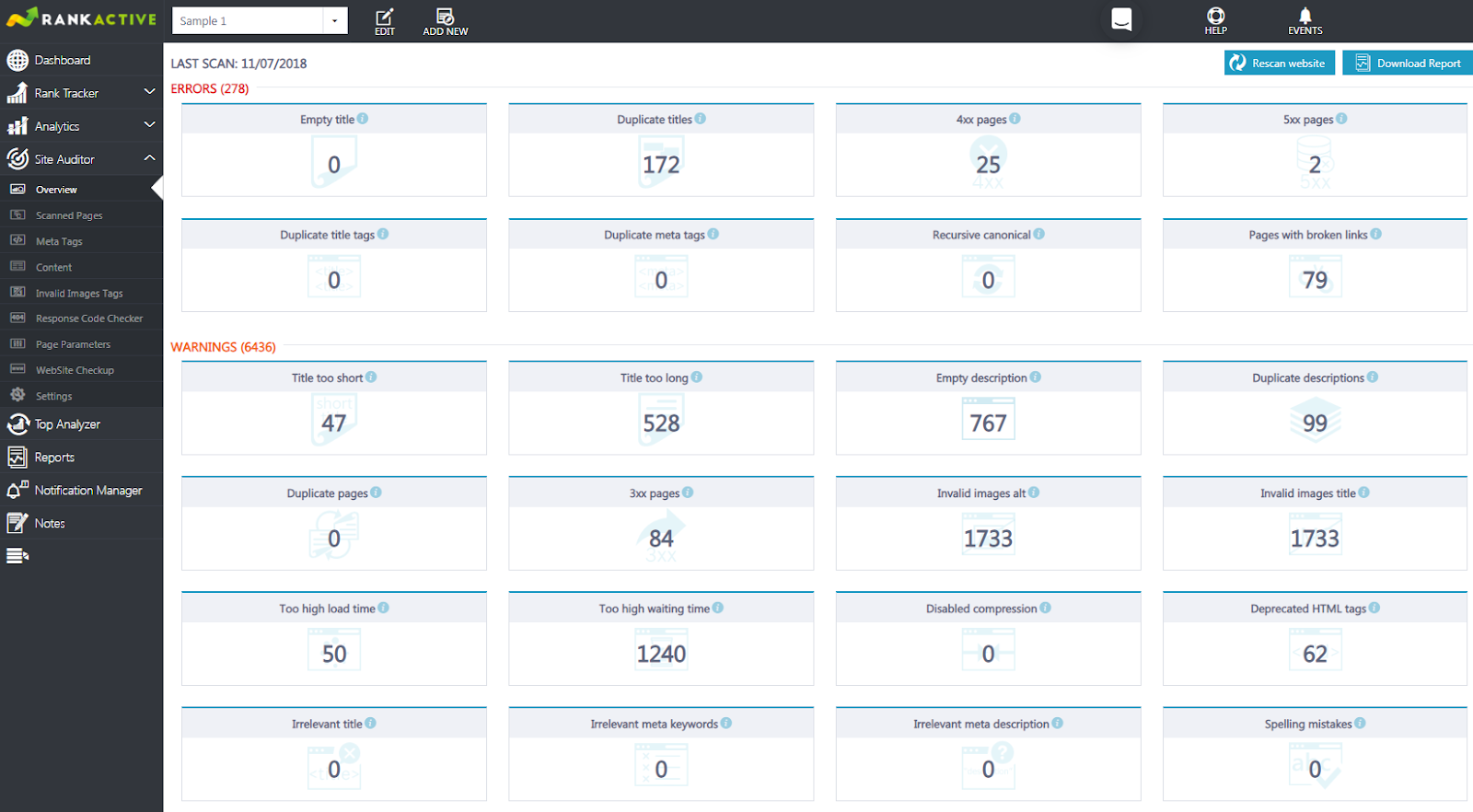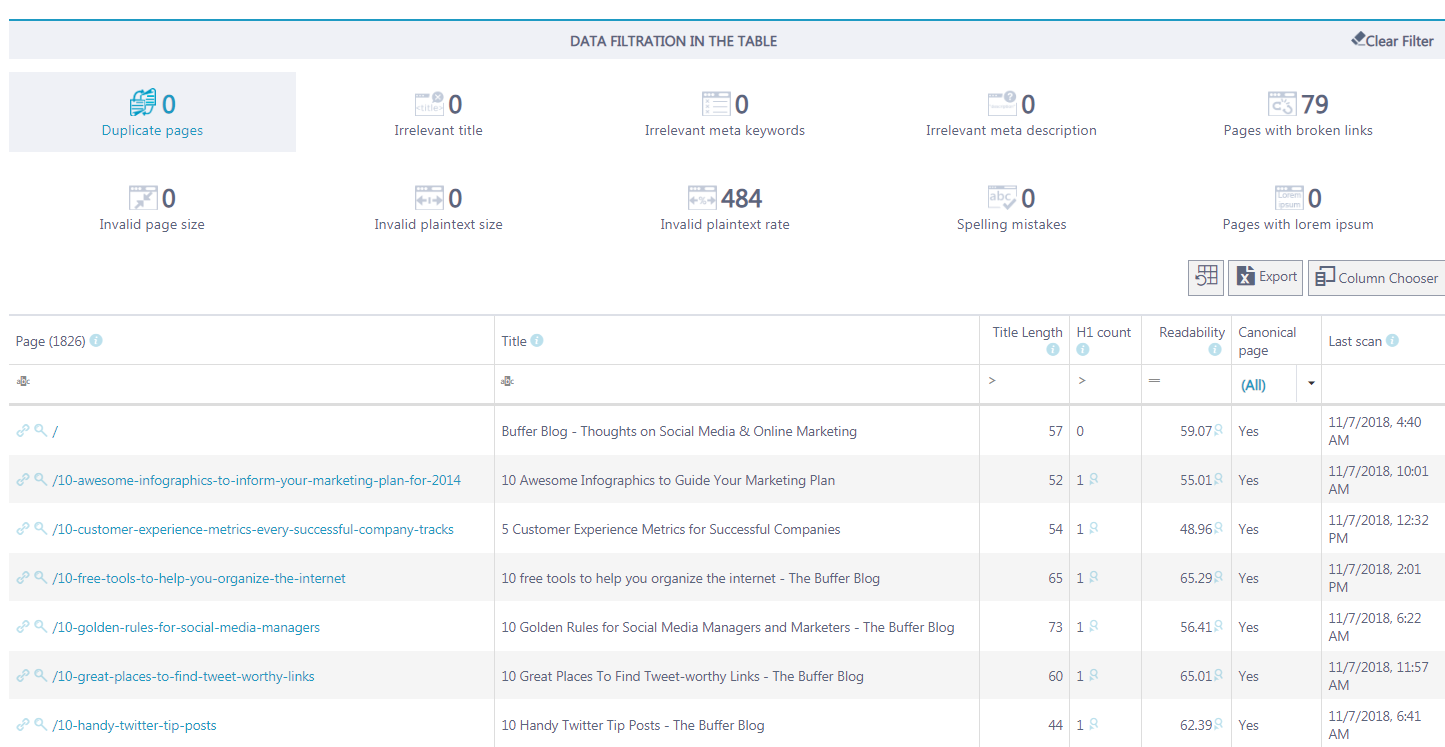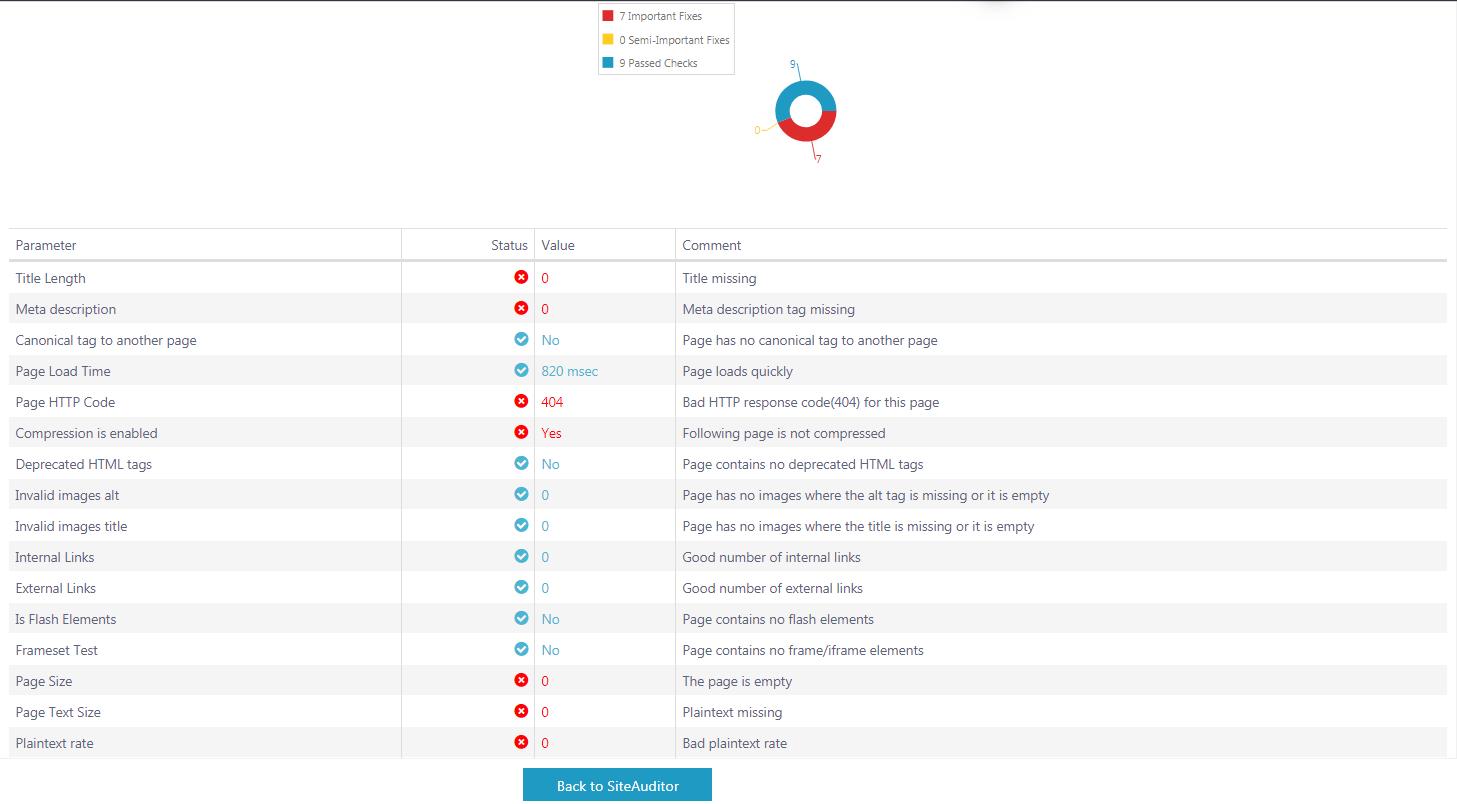Digital Marketer’s Guide to an In-Depth Technical SEO Audit
12 November 2018 Leave a comment TECHNICAL SEO
More often than not a website is left behind because it lacks content and is intoxicated with leaks or SEO issues here and there. As a content writer sprinkles some content occasionally, the technical SEO issues do not go away, and they only get stacked. For some reason, everybody is concerned with running marketing campaigns forgetting about SEO and website design.
Such poor resource allocation and website management lead to various SEO problems such as crawling and indexing issues, broken links, duplicate content and other issues which affect rankings on Google search. A business is actively trying to attract clients while is totally missing out on the “passive” or “natural” customer acquisition opportunities which is organic traffic that comes to your website from SERPs.
What’s the solution? How to save the sinking business, attract more traffic and increase sales? Take some time to think long-term and concentrate on performing an in-depth technical SEO audit.
Technical SEO audit tools
It’s impossible to spot SEO issues with a naked eye, so it’s reasonable to think what SEO tools need to be used in order to help you perform an SEO audit. There is a variety of SEO tools for an audit that can help you perform an in-depth SEO analysis of your website. The market-leading tools are:
- DeepCrawl – used for spotting duplicate content;
- Screaming Frog – used for checking Schema, Google Analytics Code, Tag manager, flashes, javascript issues and other;
- Google Search Console – used for seeing various search parameters that affect site visibility such as backlinks, sitemap, keywords, crawl and indexation issues etc.
- Google Analytics – is used for tracking your website traffic and analyzing how users interact with your website.
- Pingdom – used for website performance and monitoring.
The problem with all these tools is that they require a lot of skilled hardcore manual labor which takes a lot of time and resources. Another issue is that all the data is scattered among different software, and it would be great to keep everything in one place and track the dynamics of changes over time.
Also, collecting data from different SEO tools takes too much administrative work and steals a lot of time. What’s even more important is that keeping your data in different places may lead to data inconsistency and data loss.
However, it’s possible to avoid these issues and complete a technical SEO audit using something simpler yet very comprehensive. Usually, it’s the all-in-one SEO audit software that can help you overcome the disorganized data issues as well as successfully solve the technical SEO related problems.
How to do a technical SEO audit with RankActive
A technical SEO audit is not as complicated as it may appear at first sight. There are a lot of all-in-one SEO platforms on the market which offer a variety of tools to perform an SEO audit without knowing much of technical stuff. RankActive is an SEO software platform that truly stands out because it gives you an opportunity to do everything yourself without hiring an expensive SEO agency and you never know if you can trust an SEO firm.
In fact, most of the marketing agencies and SEO firms use similar SEO audit tools in addition to Google Analytics, Webmaster Tools and Search Console. So, why can’t you? Usually, any SEO website optimization starts with some SEO audit tool like Site Auditor which shows you all the issues with your website such as duplicate tags, titles, pages, 404 and other 4xx pages, etc.
Site Auditor is a first aid kit for your website because it helps you identify where your site is lacking performance and what can be optimized. One of our clients shared his approach on how he provides SEO services working as a freelance SEO expert. The first thing he does is that he enters the domain name into the Site Auditor to see how the site is performing.
The most common issues that he looks for are:
- Robots.txt file availability;
- Missing SSL certificate;
- URL issues;
- Redirects and canonical pages;
- Broken links;
- Invalid alt attributes for images and invalid meta description;
If there is something wrong with these things an SEO expert knows what to do because they can see the clear picture of what’s happening on the website.
Why you need Robots.txt
Robots.txt file is completely optional and is used for blocking certain URLs from crawling. It’s necessary when you don’t want to rank for your privacy policy page or terms of service, etc.
At Google support, you can learn how to use robots.txt to prevent crawlers from scanning the unnecessary pages.
Missing SSL certificate
According to recent Google security requirements, SSL is something that every website should have to have better ranking potential. However, from our own observations, we’ve found that there are a bunch of websites that rank just fine without any SSL certificates and are not blocked by Google.
You can have no SSL certificate and still rank well. On the contrary, you never know when Google algorithm will update their policy and make it more strict, so it’s good to be prepared, especially, when SSL is coming for free from some domain registrars and SSL provider Comodo as well.
URL issues
URLs or permalinks are the things that need to be fixed at the start. Having a poor link structure may shake your SEO indirectly. You may miss out on the opportunities to use some keywords in the URL if it looks something like “https://sample.com/3316e236/”. On the other hand, when your link looks good such as “https://sample.com/folder/article-2018/” you make it appear aesthetic and user-friendly.
Make sure you check out 5 ways to make your website visible on Google search where we dig into the URL structure a little bit deeper, and also give you some piece of advice to rank better on Google.
301 redirects and rel=”canonical” attributes
301 redirects and rel=”canonical” attributes are the things that we’ve already talked about quite a lot and we even have an article on how to set them and why you need them. So, check out SEO-friendly ways to set up 301 vs canonical redirects without losing traffic.
It’s crucial to set 301 redirects if you have different websites but the same content on both of them. Also, if you moved your website to another domain you need to set 301 redirects from your old site so that you won’t lose your traffic.
Canonical attributes are used to indicate the “master” page if there are two similar pages with the same content, for example. Let’s say you’ve got 2 articles one is old and another one is new. However, you covered the same topic “just to update the information”. In this case, you can place the rel=”canonical” tag on the new article so that it complements the older one or vice versa.
Broken links or 404 pages
For example, you’re just building your website or maybe you’ve changed some folders and have just forgotten to set up redirects or update your links. The older links are no longer working correctly and lead users to 404 pages.
While the 404 page itself doesn’t affect your rankings anyhow, however upset users do. When there is a link that leads to nowhere it’s better to have it fixed rather than confuse your website visitors. Also, it’s good to have custom 404 pages which show something meaningful and can get your users back to the homepage, at least, before they bounced back themselves.
Invalid alt attributes and meta description
Often times, when people upload imagery to a CMS such as WordPress they may forget to fill in alt attributes, caption, and description. There is a tendency to believe that if you don’t fill in these parameters your website visitors may get frustrated if the image doesn’t load and they won’t see any message.
In reality though, you need alt attributes to be able to place keywords there so that when somebody who is interested in your niche is looking for some images on the web may land on your website.
Conclusions
There are a lot of tools on the web that allow you to do an in-depth technical SEO audit. However, the major issue with having too many external tools is that you can’t track your data properly and it also may be lost. As a digital marketer, you know the value of having correct data at hand which is regularly updated and comes from the proven resources.
With RankActive you don’t need to care about hundreds of Excel spreadsheets that must be updated on a regular basis. Instead, you have a whole SEO audit software platform that can easily combine a whole SEO team in one place. With RankActive you can keep your website nice and clean meeting the Google algorithm standards inexpensively.
Visit our pricing page to learn more about the costs.
Tags: SEO audit, technical audit, website audit
Like this article? There’s more where that came from.
- YouTube Hacks Your Online Marketing Agency Can Implement to Boost Video Rankings
- When Less is More: Why We Decided to Remove Backlinks and Link Manager Features
- How to increase your CTR using Schema.org
- How to Get Out of Google Sandbox and Do It Quickly?
- Geolocation Redirect 101: How to Secure Your SEO Localization Efforts?
- Your Ultimate Guide to SEO Reporting with RankActive
- Your 7-Step Guide to Increasing Page Speed
- How to Do SEO Competitor Analysis? Your Checklist for 2019








